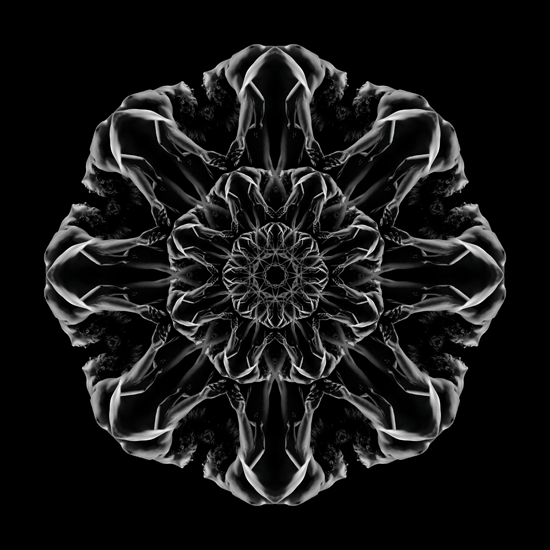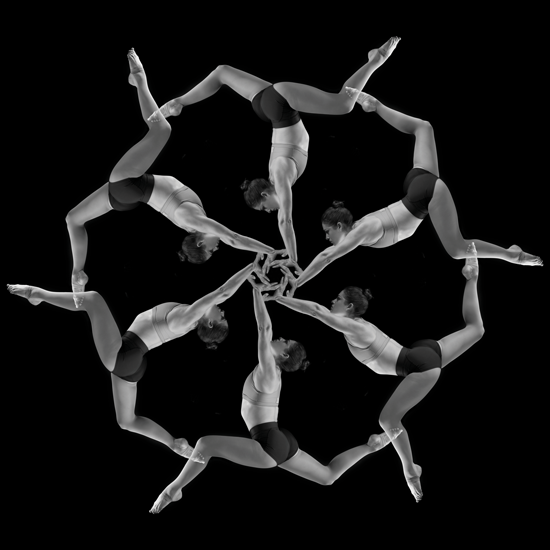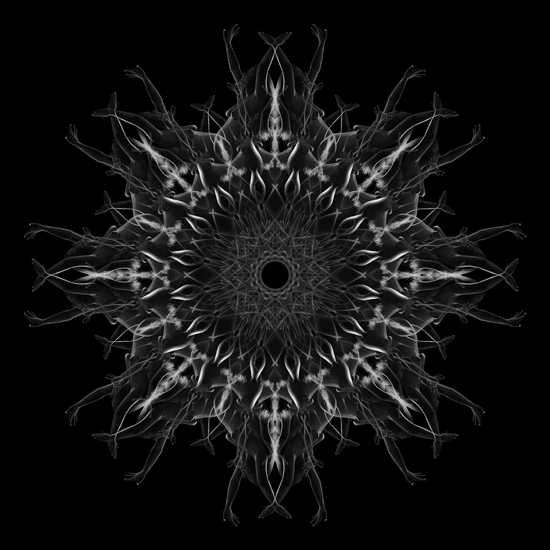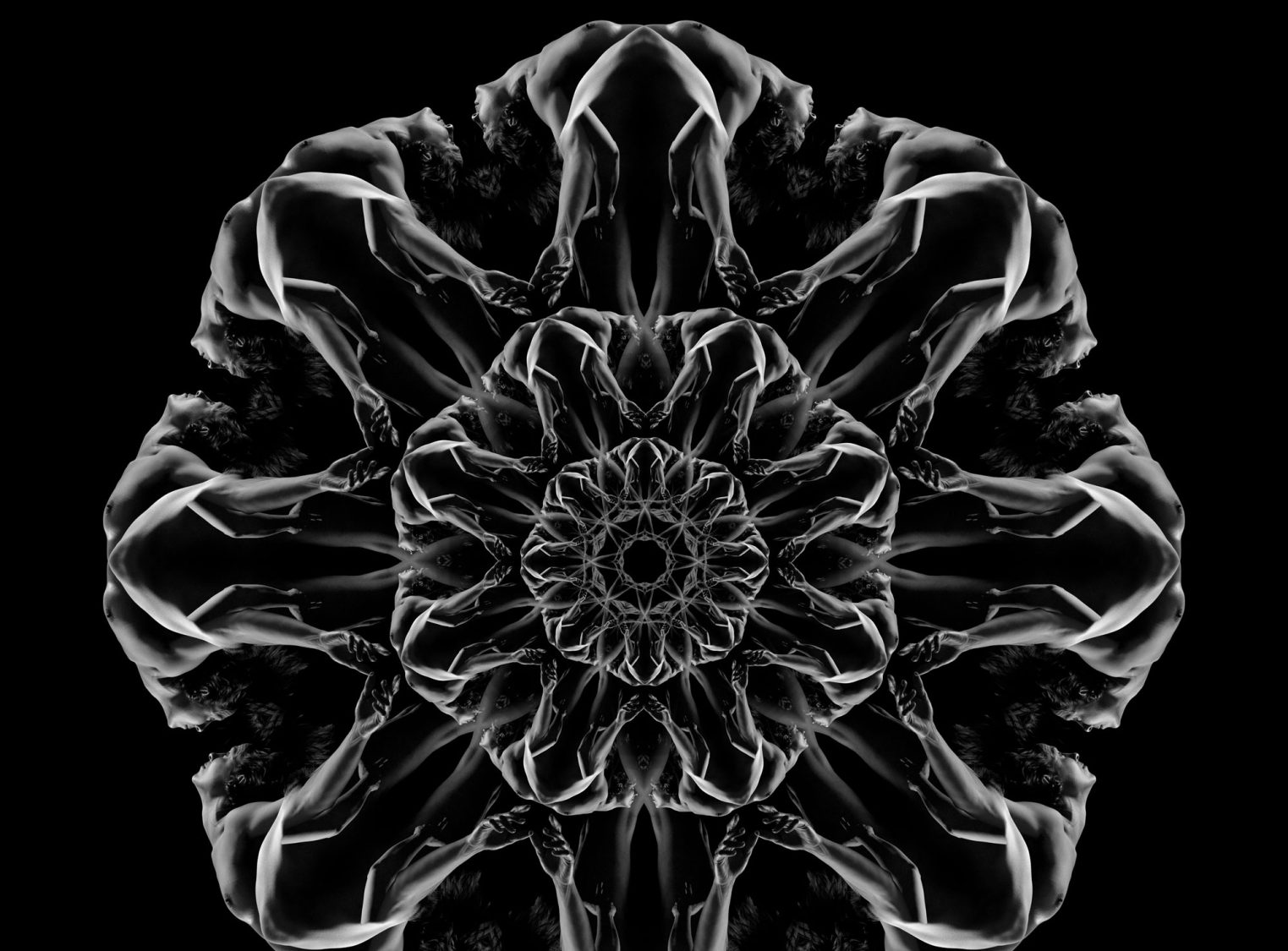I am so filled with thirst to be involved with people that there is no room in me for judging whether a person is good or evil, beautiful or ugly, right or wrong. This is not the result of some concept such as “one lives to love and be loved.” Any concept, faith, or “ism” cannot separate me from other people. My spirit shines with the heart/mind of embracing all beings. Without logic or argument, I only want to embrace everyone. My work of spreading the dharma is nothing but the expression of this heart/mind.
—Haya Akegarasu (1877–1954)
A couple of years ago, I was invited to be one of the congratulatory speakers at a Buddhist wedding in Kyoto. When I spoke, I pointed out that at Christian weddings in America the marriage bond is described as if it were a thick rope binding the bride and groom together for eternity: “Let no man put asunder what God hath joined together.” But for Mike and Kayoko’s wedding I wanted to offer an image from Buddhism: Indra’s jeweled net, which is described in the Avatamsaka Sutra. At each intersection of the strings is a multifaceted jewel, so that each jewel reflects all the other jewels. Instead of being tied up tightly by a thick rope, Mike and Kayoko’s relationship is supported and nurtured by a vast net of their families, friends, teachers, and associates. For them, I said, it is the awareness of the net that will help them grow together and minimize the stress of clashing egos.
All of us are the evolving product of relationships, and all of us are participating in the changes affecting others. Even the hermit on the mountaintop interacts with people, or at least feels a connection to the plants and animals he depends on for his physical and mental well-being. So why do some people interpret the Buddhist teaching of nonattachment to mean cutting yourself off from all relationships? It’s true for most of us that at some point in our life we come to leave our childhood, exploring options our parents opposed or could not have even imagined. But this “leaving home” doesn’t necessarily involve physically moving away or ceasing to be in contact with our families. After the historical Buddha became known as a revered teacher, the early scriptures show him interacting with his war-minded father, Shuddhodana, and record that his own son, Rahula, joined the ranks of disciples along with the Buddha’s wife, Yasodhara, and Mahaprajapati, the aunt who raised him after his mother’s death. The Buddha may have left his family at age 29, but in his later life he had relatives close at hand, to argue with and to learn from, up to and beyond their passing away.

They say the Buddha had to leave his family in order to find enlightenment. The notion that we can disengage from relationships is unrealistic. Although in monastic practice the monk or nun has physically ceased contact with their families and former associates, they interact with each other as well as with the laypeople who support the temple and go there for inspiration and guidance. The Pure Land Buddhist tradition started out as a way for laypeople, the “householders,” to work toward nirvana without having to abandon their familial obligations. The sutras and commentaries of the Pure Land tradition are not just offering an alternative path to those who are unfit or too entangled in worldly affairs to be monastics. They also offer a stern critique of the monastic life’s major potential pitfall: transcending the ego-self becomes more unlikely when practitioners take pride in their own efforts and feel they’ve placed themselves on a level superior to and apart from householders and fellow monastics. Instead of attaining freedom from the self, falling into such pride can then lead them to weave themselves into a web of self-attachment.
In the Pure Land tradition, the ego-self is transcended only with the deepening awareness of our interconnection with others. The tradition’s keystone scripture, the Larger Sukhavativyuha Sutra, illustrates the Mahayana notion that bodhi, awakening, is not an individual achievement but arises because of and along with the awakening of others. The sutra tells the story of a bodhisattva named Dharmakara, who vows that upon his attainment of enlightenment all beings will be included in the realm of awakening (his Pure Land). However, it’s interesting that an exclusion clause is included in Dharmakara’s eighteenth vow:
If, when I attain Buddhahood, sentient beings in the lands of the ten directions who aspire to be born in my land should not be born there, may I not attain perfect Enlightenment. Excluded, however, are those who commit the five grave offenses and who slander the right dharma.

To say that those who abuse the dharma and commit the five grave offenses (killing one’s father, killing one’s mother, killing an arhat, causing injury to a buddha, disrupting the monastic community) will be left out may seem to contradict the assurance that all beings, no matter how weak or evil they are, will be taken into the realm of awakening. But all of the great historic Japanese teachers of the Pure Land tradition, from Shinran on, understood the exclusion clause as a warning to them personally, a reminder of how often in their thoughts they committed the crimes of killing their parents and teachers, and so forth. To paraphrase: “Whenever I’m being an asshole with the stinking attitude that I have somehow made myself better than my parents, my teachers, and fellow seekers, and whenever I twist the teachings to justify my superior position, then I’m the one who is excluding myself from the vast net of lives being born anew in the awakening to suchness.”
Recently I was asked to visit a woman in a convalescent home. The daughter who called us was not a member of our temple but had been learning about Buddhism through meditating with a Vipassana group. When I visited the mother, she mentioned that the literature on Buddhism her daughter had given her to read seemed to say we must “cut the ties that bind,” while all the health advice pamphlets tell patients that an important factor in healing is to cultivate one’s relationships with others. I explained that Buddhism is not against having relationships but is only warning us not to have what is usually translated as “attachments.” I prefer to use the word “possessiveness.” It is possessiveness when we use our relationships for self-enhancement, treating others as objects to control and show off. That possessiveness brings us to grief when we think our happiness depends on others doing our bidding.

But there’s nothing wrong with having relationships in which we can appreciate people for who they are, independent of how anyone else thinks they should be. I think one reason seniors enjoy their grandchildren so much is that they have learned already as parents how useless it is to impose crusty old expectations on these fresh new lives. So I told the convalescing woman to keep up her communication with her friends and family members—not just for her own health but to experience the truth of the interdependency of life. In the Pure Land tradition, this deepening appreciation of others is the path to transcending the ego-self.
Quiet self-reflection and taking the time to be mindful of the here and now are part of most spiritual paths, but the formal practice of meditation is optional in the Pure Land tradition. We gather in our sanghas to receive the teachings by listening to dharma talks and studying and discussing the writings of the major teachers from Shakyamuni to our contemporaries. But to put these teachings of transcending the ego-self to the test, we need to be in the world of interaction with others, with our families, friends, and coworkers and with every being we encounter as we go about our lives of shopping, filing an insurance claim, renewing our driver’s license, and so on.
We have come to the path because of the many people in our lives, including those associated with painful experiences. And on the path we are carried along by myriad lives near and far in time and space. The universe of the jeweled net as an unbounded whole is evoked on hearing the chant “Namu Amida Butsu.” It is our reminder to Namu (“come out of your ego-self cocoon”) Amida (“know you are totally included in the universe of boundless wisdom and compassion”) Butsu (“wake up to the flow of life, free of fixedness”). There is no dogma dictating detachment from others, as if we have to run ahead of and separate ourselves from the pack. Instead we have the story of Dharmakara giving us the heart/mind to aspire only to the enlightenment that includes all beings.
Thank you for subscribing to Tricycle! As a nonprofit, we depend on readers like you to keep Buddhist teachings and practices widely available.
